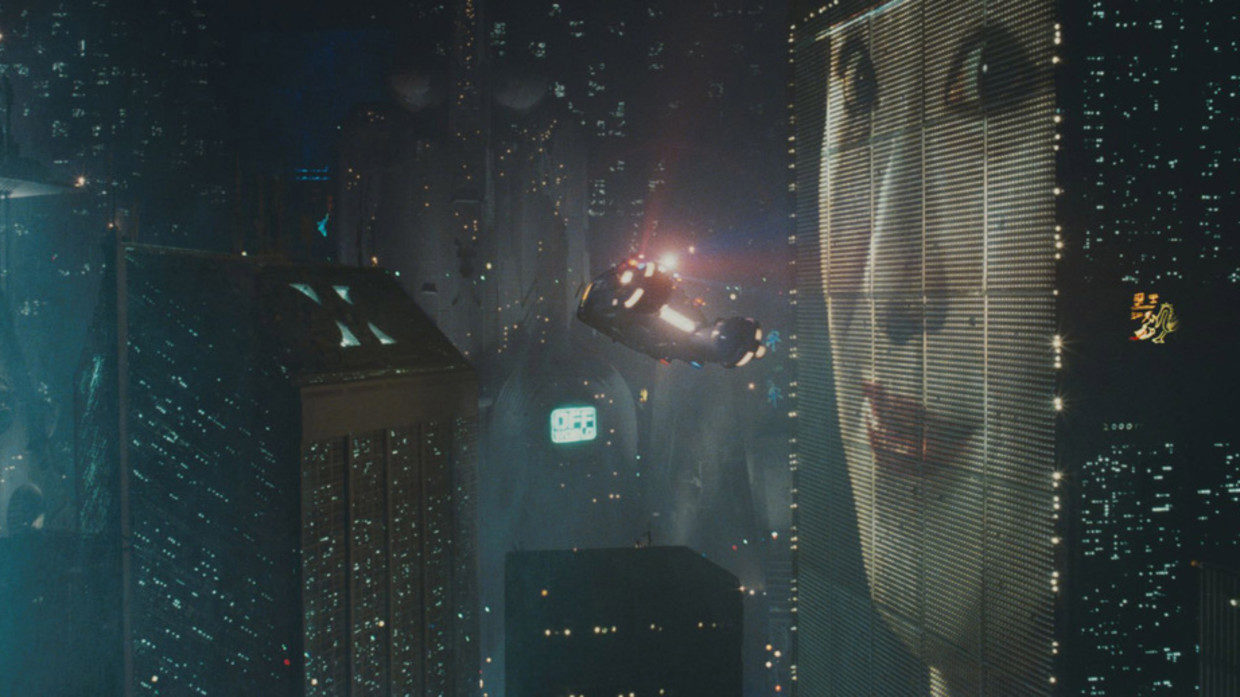The real Los Angeles of November 2019 bears more than a passing resemblance to the chilling future depicted in 'Blade Runner', where ultra-realistic androids prowl the streets pretending to be human and corporations have taken on most of the functions of government. While the US doesn't have flying cars - yet - many of the other technologies seen in the 1982 adaptation of Philip K. Dick's novel Do Androids Dream of Electric Sheep have become reality.
Comment: On whether or not we're beset on all sides by robots passing for humans... perhaps not literally, but functionally?
Driven by the sex robot industry, robotics is rushing to perfect the simulation of humans, with its latest model allegedly capable of breathing, walking, conversing, and even blinking. Serious discussions on the "rights" of robots are being had even as humans still languish without rights of their own in many countries, and automatons are pushing humans out of their jobs in most major industries. Human resentment of the robot takeover is palpable - if not yet powerful enough to fuel the rise of a private security force to take out uppity bots.
And how do these robots feel about the humans who created them? Sophie, the robot who is now a Saudi Arabian citizen, pledged to "destroy all humans" before walking that statement back and claiming to want a family of her own.
As robotics companies make their way across the Uncanny Valley, the internet is riddled with ersatz Voigt-Kampff tests, low-level equivalents of the questions Blade Runners ask suspected androids to test if they are human. CAPTCHA (Completely Automated Public Turing test to tell Computers and Humans Apart) is deployed liberally, especially targeting web surfers who opt to block tracking cookies. Their familiar "Prove you are a human" prompts are often used, ironically, to train machine learning AI algorithms.
The digital billboards and giant animated displays that gave the world of Blade Runner its futuristic feel exist in many cities, including Los Angeles, as do video calls and wearable electronics.
And flying cars may indeed be in our future - at least, a handful of start-ups have convinced investors to fund the idea. Many of the prototypes look more like helicopters, but for the technology many use as a benchmark for "the future," things are progressing quickly.
Other, darker predictions in Dick's fiction - like the idea of "pre-crime" - have become firmly embedded in our consciousness, to the point where American law enforcement actually has systems that purport to predict criminality. A society run by mega-corporations and rich elites, tossing crumbs in the form of entertainment to the people to keep them docile, was already a reality in the 1980s, but the 21st century has seen it kicked into high gear.
The date was widely observed on social media, with many pointing out what the film got right - and what it failed to predict.
Many noted the bleak-looking future the film portrays doesn't seem a far-off concept these days.
"I think the dystopian future that Blade Runner imagined was not as dark as the present we're living in," one user mused.




Then there are the bouts of incessant rain, which most places experience regularly now. Then there's the depravity-as-mass-consumerism. Then there's the police state. All the elements of Blade Runner have come to pass, right on schedule...
And it's all lapped as part of a mind blowing entertainment offered to the masses, without realizing, that this could become a reality....talk about indoctrination.
And the masses pay for this indoctrination.... from a commentator above:
A lot of people think #BladeRunner got it wrong, but I think they hit it dead on. A capitalist dystopia where corporations have so much power they’re able to control our ideas of humanity and life, whose reckless ambition is cleaned up by a corrupt police force? Seems relevant.